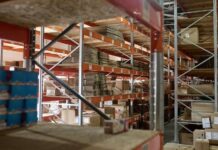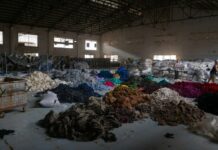In a sharp escalation of trade conflicts, the United States and China have entered a new era of tariff disputes. Tariff war impact on textile has become a critical concern as China implements a staggering 125% tariff on American goods, while the U.S. retaliates with a hefty 145% tax on Chinese imports. Additionally, a new universal 10% reciprocal tariff has been introduced on products from all other trading nations. These impactful adjustments are dramatically altering the global economic landscape, especially affecting the Textile & Apparel (T&A) sector, which relies heavily on a balanced international supply chain and competitive pricing.
Decoding the New Tariff Environment
Significant Tariff Changes
- China’s 125% Tariff on U.S. Goods: This considerable tariff acts as both a punitive measure and a strategy to shift trade dynamics. For U.S. T&A producers sending raw materials, components, or finished goods, the tariff war impact on textile increases costs significantly in China, a vital hub for consumption and production.
- U.S. 145% Tariff on Chinese Goods: The U.S. has raised tariffs on imports from China to 145%, making it much more costly for American consumers to obtain affordable textiles, fabrics, and apparel directly from China. This bold step aims to support domestic industries and encourage importers to rethink their sourcing practices, emphasizing the tariff war impact on textile production.
- Universal 10% Tariff on Third-Party Goods: The enforcement of a 10% tariff on products from other countries adds further complexity. This strategy aims to deter companies from sidestepping tariffs by moving production to nations with lower taxes, but it also influences emerging sourcing alternatives for T&A products, including Bangladesh, Vietnam, and Turkey. The tariff war impact on textile sourcing is being felt across the globe.
Wider Trade Consequences
Collectively, these tariffs are putting pressure on both countries, leading to alterations in demand and supply that go beyond the narrow U.S.–China relationship. The T&A industry, which often navigates through intricate global supply chains, is facing diverse challenges as a result of these changes, with the tariff war impact on textile being one of the most significant.
Effects on Global T&A Manufacturing
- Disruption and Realignment in Supply Chains
- Shifting Sourcing Strategies: The T&A sector has historically depended on China for low-cost production. With the U.S. tariffs on Chinese products, companies are now forced to find alternative manufacturing locations. However, new suppliers may not possess the efficiency, quality, or production capacity that China provides.
- Navigating the Tariff Triangle: The universal 10% tariff restricts the ability to completely pivot away from China. Manufacturers are now faced with a “tariff triangle,” necessitating careful evaluation of total landed costs when shifting production, weighing tariffs against transportation costs, labor quality, and dependability.
- Cost Pressures and Pricing Challenges
- Rising Production Expenses: The increased tariffs result in higher production costs for T&A manufacturers. The 145% tax on Chinese inputs elevates the prices of raw materials and intermediate goods. Even with relocations, the additional 10% tariff further squeezes profit margins, which are already narrow in this industry.
- Impact on Consumer Prices: Transmitting these increased costs to consumers poses a significant risk. In markets sensitive to price, any rise in retail prices due to tariff-induced costs could diminish market share and dampen demand. Brands must strike a balance between maintaining profitability and retaining price-conscious customers.
- Market Dynamics and Competitive Pressures
- Emerging Production Hubs: Southeast Asian countries like Vietnam, Bangladesh, and India are now in a position to gain market share that was once dominated by China. However, these nations need to invest in improving quality control and ramping up capacity to effectively bridge the gap. Some manufacturers are adopting “dual sourcing” strategies to mitigate the risk of future disruptions.
- Building Strategic Alliances: In light of rising tariff pressures, T&A companies are increasingly forming alliances to share resources, innovate in supply chain management, and negotiate favorable terms through long-term contracts. Collaborations with technology providers for improved logistics, real-time tracking, and demand forecasting are also on the rise, enhancing resilience against unpredictable tariff shifts.
- Innovation and Adaptation within the Industry
- Focus on Automation and Sustainability: The financial pressures brought on by tariffs are driving manufacturers to enhance productivity through automation and efficient manufacturing practices. Investments in robotics, digital workflows, and sustainable methods are seen as crucial long-term strategies to navigate cost challenges and stand out in a competitive marketplace.
- Responding to Changing Demand: With tariffs affecting export behaviors, T&A companies must remain agile to adapt to shifting consumer preferences and regulatory landscapes. Flexible manufacturing methods, such as on-demand production and modular lines, are becoming increasingly valuable in managing market fluctuations.
Strategic Approaches for the Future
- Risk Management and Contingency Planning: Businesses need to implement comprehensive risk management protocols and engage in regular scenario analyses to prepare for potential tariff changes. Building contingency reserves, diversifying supplier relationships, and investing in market research can help mitigate the impacts of abrupt regulatory shifts.
- Engagement and Collaboration: Industry groups and trade associations are intensifying their efforts to liaise with policymakers to secure more stable trade agreements. By presenting unified data and compelling case studies, T&A manufacturers aim to influence future negotiations and alleviate the burdens of extreme tariffs, further impacted by the tariff war impact on textile sectors.
- Adopting Digital Innovations: Digital platforms can streamline inventory management, optimize order processing, and improve supply chain transparency. By embracing digital solutions, manufacturers can effectively navigate the complexities of the evolving tariff landscape, ensuring they maintain their competitive edge in a rapidly changing market.
Conclusion
The recent wave of tariffs—including China’s 125% tax on U.S. goods, the U.S.’s 145% tax on Chinese imports, and a universal 10% tax on products from other countries—are sending shockwaves through the global Textile & Apparel sector. While these measures aim to protect domestic interests and rebalance trade dynamics, they introduce substantial uncertainty into international supply chains. The industry’s response will likely involve diversifying its sourcing locations, investing in automation, forming strategic partnerships, and increasingly leveraging digital innovations. In this unpredictable environment, adaptability and proactive risk management will be vital for both survival and long-term growth, as the tariff war impact on textile continues to evolve.
































